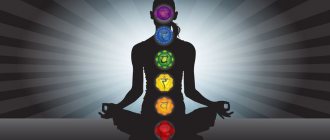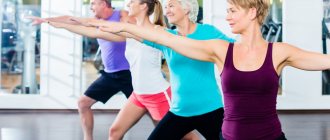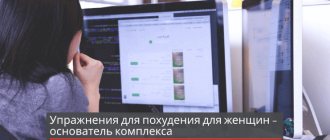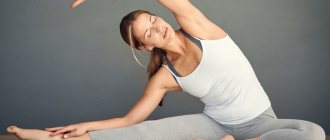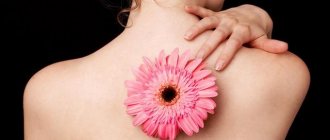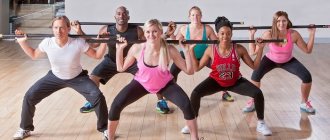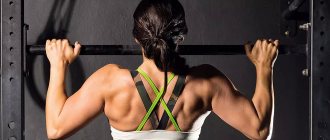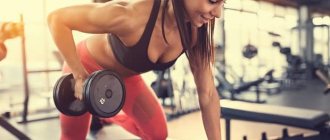There are countless ways to lose extra pounds and improve your health. Along with modern methods, those that have been known to the world for decades and even centuries are also popular. Among them, qigong, a traditional Chinese system of health-improving gymnastics, occupies a strong position. It combines poses and movements that are accessible to every person.
Despite the simplicity of the exercises, supporters of the eastern practice are confident that it promotes health, weight loss and normalization of mental state. We'll tell you how Chinese miracle gymnastics actually works.
Japanese Fukutsuji method: a simple exercise with a towel that helps you lose weight
How did the Eastern method originate?
The founder of qigong in its modern interpretation is considered to be the doctor Liu Guijen
, a Chinese Communist Party worker. In 1948, colleagues recognized the specialist as terminally ill, because by the age of 27 he suffered from neurasthenia, tuberculosis and a severe stomach ulcer, and also weighed less than 40 kilograms. Liu was sent to retire to his native village, but, to the surprise of everyone, he was able to improve his health.
Photo: istockphoto.com
Thanks to his uncle, Guijen became acquainted with traditional Chinese medicine. His treatment was more like an unusual health camp. Almost all the time for three months, the doctor was engaged in movement and breathing practices, repeated mantras and followed a diet. After 100 days, he was able to gain 15 kilograms and return to work.
Liu's colleagues were so impressed with his recovery that they sent a specialist back to his uncle. Now it’s no longer time to undergo treatment, but to find out all the nuances of the healing technique. Guijen separated gymnastics for body development from religious and feudal remnants, systematized a set of exercises and obtained what is now called qigong.
Scientifically proven: correct breathing method helps speed up metabolism
Rules and recommendations of tai chi for beginners
- Do not immediately master the taijiquan complex as a whole. Study each form separately, paying attention to the transition from the previous to the next.
- Having mastered the physical execution of the form to the point of automatism, learn proper breathing. The complex uses two types: direct and reverse (in 4,6,8,9,11,14,15 forms).
- Do not start classes if you feel that there is not enough time to calmly complete the entire complex; it is better not to start.
- During the entire complex you cannot talk or be distracted by extraneous actions.
- To deepen concentration, it is better to practice attention not in silence, but in the background of light, non-aggressive noises (birds singing, splashing waves, rustling leaves) or pleasant music.
- The number of repetitions of each form must be strictly individual.
- Therapeutic or gentle regimen - 3 times repeat.
- Standard mode – 6-fold repetition.
- Difficult mode (with good physical preparation) – 9-12 repetitions.
- After completing the complex, it is not recommended for 15 minutes. Eat, drink, shower. This is explained by the fact that water is a very strong element and can destroy the energy harmonized by the implementation of the complex.
- Before starting to perform the forms and at the end of the lesson, it is advisable to spend 5 minutes. hold in a static position (standing, sitting, lying down) to accumulate energy, organize thoughts, and calm your breathing.
To summarize, I would like to note that Tai Chi Qigong is a healing and preventive practice. Improved health occurs due to the harmonization of the energy picture, gradually relieving the body of many problems. But all this is subject to regular exercise.
Qigong in the modern sense
Now qigong refers to a whole system consisting of gymnastics, breathing exercises and meditative practices. The technique is divided into internal and external. The first is associated with such a concept of Chinese medicine as Qi energy. According to Eastern teachings, in a healthy person it moves freely throughout the body, and if this process is disrupted, then diseases occur. Essentially, Qigong aims to restore the movement of Qi in the body and get rid of ailments.
External practice is much easier to understand. It includes smooth movements, control of thoughts and exercises with breathing - natural or abdominal, hard or soft. Roughly speaking, this is a kind of meditation that allows you to get rid of stress and keep your body in good shape.
Among the practices are:
- static
- aimed at maintaining postures and working on breathing; - dynamic
- in them the emphasis is on performing movements and sometimes elements of self-massage.
The Chinese Health Qigong Association distinguishes four areas of gymnastics.
- Ba Duan Jing
- "eight magnificent movements." The complex includes smooth changes of poses in which muscle tension and relaxation alternate. - Wu Qin Xi
- "games of five animals." The exercises imitate the movements of a deer, crane, bear, monkey and tiger. - Liu Ji Jie
- "the art of creating six healing sounds." These are breathing exercises in which you need to make sounds while exhaling. - I Jin Jing
is “classical gymnastics for tendons and muscles.” The complex develops strength and flexibility, includes body rotations, tension of muscles and joints, bending and twisting.
Chinese massage technique: 6 points on the body that help you lose weight
What is Tai Chi Qigong?
Eastern philosophers claim that there are three energy circles of health. A person’s thoughts and emotions make up the first circle. In the second - relationships with loved ones, neighbors and colleagues. Harmonious connection with the Universe is the third circle. A person whose three circles are in balance can be called perfect. But the path to perfection begins with good physical preparation.
Therefore, every year various Tibetan practices of self-development and human self-improvement are gaining more and more popularity in the world. There are many of these practices, and among them are “tai chi”, “tai chi”, “taijiquan”, “qigong”. Some people use them as a martial arts school, others use them to improve their health. But for whatever private purpose a person uses both Tai Chi and Qigong, he receives many benefits for his own health, because these practices help improve vital energy and accumulate it. For this reason, more and more people, especially older people, are engaged in them not to master martial arts, but simply to improve their health and well-being.
Each qigong system is a set of sequential exercises. One of the most modern complexes of Tibetan gymnastics was developed by master Lin Houcheng at the end of the 20th century. But the novelty of the complex should not confuse anyone, because it is based on the principles of the oldest Taoist systems and perfectly combines both physical and mental methods of coordinating the energy of the body. This complex is called the “18 forms of Tai Chi”, because of its simplicity and effectiveness it is widely known not only in China.
It is a well-known fact that those who practice taijiquan gymnastics (tai chi) or qigong, in order to obtain the highest effect of self-improvement when performing exercises, must distance themselves from external factors, withdraw into themselves, mentally concentrating on the processes occurring in the body during the exercise. But such a skill is acquired through years of training. The special value of the “18 forms of Tai Chi lies in the fact that its healing potential manifests itself regardless of the ability to withdraw into oneself. It is enough to carry it out accurately and systematically, and this will lead to a positive result. Not right away. Neglected chronic diseases, acquired over the years, do not give up easily; they are very resistant to any influence. And it is impossible to get rid of them in a month or several sessions. But a positive therapeutic effect will be obtained. This is explained by the fact that the forms themselves provide a massage of the internal organs, and the structure of the complex itself causes a powerful energy flow.
Therefore, you should not make any changes to the complex or change the order of exercises, because this sequence is perfect. It was built by a master who subtly and deeply senses energy flows, which is inaccessible to the consciousness of inexperienced beginners.
The mechanism of this complex is reminiscent of washing dishes or washing clothes in running water, which takes away all the dirt, giving cleanliness and freshness.
The influence of Chinese gymnastics on the body
With the help of gymnastics, as with any other physical therapy, you can improve your health, stretch your muscles and even lose extra pounds.
Although qigong does not give a lot of stress, in some poses you need to maintain balance and try to maintain balance. In this case, the stabilizer muscles actively work, and the muscle corset develops evenly. In addition, deep diaphragm breathing speeds up your metabolism, which helps you lose weight.
Photo: istockphoto.com
The exercises are also aimed at tensing, relaxing and stretching the muscles. This causes blood flow to them and nourishes the tissue. Bends, turns and twists improve the mobility of the spine and have a positive effect on posture.
The enemies of beautiful posture. Three habits that ruin your appearance
The effectiveness of qigong for weight loss
According to sages from China, fat is an accumulation of negative energy that must be gotten rid of otherwise it will cause harm to the body.
Stress, fatigue, systematic stress - all this negatively affects the functioning of the digestive system. Tension leads to the fact that the body is rebuilt, it begins to accumulate fat, trying in this way to protect itself from environmental factors. With the help of Qigong gymnastics, mental balance is achieved and, as a result, the need to accumulate excess deposits disappears.
If you believe the statistics, doing exercises helps you lose from 3 to 18 kg in 1 month. The process of losing weight is influenced by many factors, which certainly affects the result.
How to increase the effectiveness of gymnastics:
- It's worth doing the exercises regularly.
- Don't overeat.
- Maintain peace of mind.
- Approach the exercises in a good mood.
- Don't overdo it.
It is recommended to do the exercises regularly with self-discipline. You can exercise every day or 2-3 times a week. The effect of the exercises will appear after 30 days.
Recommendations and contraindications
Qigong is a good way to prevent illnesses; its movements are accessible even to people with physical disabilities. Experts from the USA, Brazil and China published a systematic review of Eastern practice and its meta-analysis. They concluded that such activities were beneficial for quality of life, sleep, balance, arm strength, trunk flexibility, systolic and diastolic blood pressure, and resting heart rate.
Researchers from universities in the US and China have shown that exercise can reduce joint muscle pain and improve overall sleep quality in people with chronic diseases.
In addition, scientists from the universities of Paris-Saclay, Paris Descartes and the Montsouris Institute for Mutual Aid found that qigong works in the treatment of anorexia nervosa. It can enhance psychotherapy and promote the healing process of patients.
Sometimes the technique is used in the complex treatment of arterial hypertension. In 2015, a review of scientific articles was published that prove the effectiveness of practices in the fight against this disease.
Photo: istockphoto.com
A set of exercises is contraindicated during exacerbation of chronic diseases. And if you have problems with the spine, knee and hip joints, you should consult a doctor before starting classes.
Contraindications
Despite all the advantages, ancient Chinese gymnastics has a number of contraindications. It is not recommended to do it:
- in the presence of diseases of the cardiovascular system (severe heart failure, uncompensated heart defects, etc.);
- diseases of the spine (exercises put stress on the spine);
- mental disorders of various etiologies;
- traumatic brain injuries;
- diseases of the hematopoietic system (including hemophilia, leukemia, etc.);
- neuroinfections.
Contraindications that are considered temporary. You should not do gymnastics if:
- carrying out drug therapy using various drugs;
- postoperative period;
- increase in body temperature (or its sharp decrease);
- hypothermia or overheating;
- in the presence of severe fatigue.
Before performing exercises, it is not recommended to overeat, be nervous, drink alcohol, or smoke.
Where to start classes?
Gymnastics begins with a warm-up: warm-up exercises, circular movements in the joints, stretching, tapping on the stomach, chest, legs and shoulders. It is advisable to practice qigong every day, but if you don’t have such an opportunity, it’s okay. The main thing is to choose a suitable schedule for yourself and follow it without skipping workouts.
Most styles do not involve the use of special equipment. For equipment, you will need loose clothing that does not restrict movement. You can exercise without shoes: barefoot or in socks.
We don't sit at home. 7 things that are convenient for training in self-isolation
Practices can be carried out independently or under the supervision of an experienced mentor to understand the basics. If you don’t want to look for an instructor, then, fortunately, there are many video tutorials on the Internet that help you understand the essence of all movements and breathing exercises. For example, on YouTube, Lee Holden and master Wang Lin talk in detail about gymnastics.
Set of exercises “18 forms of Tai Chi Qigong”.
The “18 Forms of Tai Chi Qigong” complex is not just healing gymnastics. This is a unique gem of Tibetan energy practices based on ancient Eastern traditions and Taoist philosophy. In the complex below, each exercise is given two names, this is determined by the peculiarities of the translation.
Form 1. Regulation of breathing. Or Raise the water.
Starting position - stand with your feet apart, feet parallel, straighten, look forward, shoulders freely lowered, arms freely lowered.
Slowly raise your arms forward so that your hands are just above your shoulders, palms down. Inhale.
Keeping your torso in an upright position, squat down a little (knees bend at approximately 150° and do not protrude beyond the toes), with your hands lightly press down vertically to the level of the navel (palms pointing down). Exhalation.
Form 1. Regulation of breathing. Or Raise the water.
Peculiarities.
The body maintains a vertical position; shoulders are lowered, elbows hang down, fingers are naturally slightly bent; the center of gravity is projected between the feet; the pelvic part is as if in a sitting position, it cannot be protruded back (on the contrary, it is slightly moved forward, straightening the spine that usually bends back), the arms are lowered down in combination with a squat. Fig.1
Form 2. Open your arms, or straighten your chest.
We continue the previous movement. Raise the lowered hands parallel to the ground forward to chest level; At the same time, smoothly straighten your legs, turn your palms facing down towards each other and spread them to the sides to the end, thereby expanding the chest. Inhale. Bring your hands horizontally forward, bringing them together in front of your chest, turn your palms down and, as if pressing them down, bend your legs. Exhalation.
Form 2. Open your arms, or straighten your chest.
Peculiarities.
When the straightened arms are raised to chest level, gradually gradually rise up, and when they press down with the palms, squat down just as smoothly. The movements are performed in coordination with breathing; inhalation and exhalation must be continuous. Inhalations and exhalations are counted at one time.
Form 3. Colorful Rainbow, or Rock the Rainbow.
We continue the previous movement. Raise the hands that pressed down to chest level, straightening the legs. Then the hands go further, rise above the head, arms straighten, the centers of the palms turn forward. Inhale.
Shift the center of gravity to the right leg, bending it slightly, and touch the ground with the entire foot, and straighten the left leg, tearing off the heel, touching the ground with the toe. Extend the left hand to the left, lowering the hand to shoulder level (palm up, and bend the right hand at the elbow, giving it the shape of a semicircle and raising the hand to the top of the head, palm down); the body moves to the right. Continue breathing.
Transfer the center of gravity to the left leg, bending it slightly, and touch the ground with the entire foot, and straighten the right leg, lifting the heel, touching the ground with the toe. Extend the right hand to the right, lowering the hand to the horizontal (the center of the palm is directed upward), bend the left hand at the elbow, forming a semicircle and raising the hand to the top of the head (the palm is directed downward); the body moves to the left. Exhalation.
Form 3. Colorful Rainbow, or Rock the Rainbow.
Peculiarities.
Movements of the arms and body should be coordinated with breathing and performed very gently.
Form 4. Rotating the arms, parting the clouds, or parting the clouds.
We continue the previous movement. Transfer the projection of the center of gravity to a point in the middle between the feet. Cross your arms at the bottom of your stomach, raise them up above your head with your palms facing out, straighten your legs. Inhale.
Turn your hands over with your palms facing down, your arms across your sides downwards and crossed in front of your lower abdomen (right palm on top); while doing this, sit down a little. Exhalation.
Form 4. Rotating the arms, parting the clouds, or parting the clouds.
Peculiarities.
The axes of rotation of the arms are the shoulder joints; the hands describe two large semicircles from the inside out. When your hands are above the top of your head, you can lift your head and stick out your chest, promoting inhalation. (When maximum relaxation of the body is achieved, the arms at the elbows and legs at the knees are never fully straightened).
Form 5. Standing Step, Unrolling a Scroll, or Unrolling a Scroll.
We continue the previous movement. Legs apart, hands crossed in front of lower abdomen. Extend your left hand forward, palm up; the right hand, also turned palm up, passes to the right past the lower abdomen and lower back, winds back, goes down, then rises up, describing an even arc. The body turns to the right. The gaze is directed to the right palm. Inhale.
Then bend your right arm at the elbow; the forearm goes up, the palm turns forward, the hand passes past the ear with a push forward. The gaze accompanies the palm. Exhalation.
Bring your left hand extended forward to your chest; at the same time, the hand moves horizontally and along the way rubs the base of the thumb of the right hand, which is called the “fish”. The left hand continues to move backward, describes an arc down, back and up, the body turns to the left. The gaze is fixed on the left palm. Inhale.
Next, bend the left arm at the elbow, the palm faces forward, the palm passes past the ear with a push forward. Exhalation. Then move the right hand horizontally towards the chest, rubbing the fish of the left palm along the way. Thus, left and right movements replace each other.
Form 5. Standing Step, Unrolling a Scroll, or Unrolling a Scroll.
Peculiarities.
Crossing in front of the chest is the extreme position of the hands. While pulling back, inhale; when pushing with your palm, exhale. The hands that have reached the stop are simultaneously turned with their palms up.
Form 6. Sail a boat in the middle of the lake, or Row in a boat.
We continue the previous movement. At the moment when the left palm makes a push in front of the chest and its fish is rubbed by the right palm, straighten your arms with palms facing forward and raise them up in front of you. Inhale.
Bend over, without bending your arms, lower them down and move them back in an arc. Exhalation.
When the hands are pulled back to the limit, straighten up, straighten your arms with palms facing forward, and raise them in an arc forward and up above your head. Inhale.
Form 6. Sail a boat in the middle of the lake, or Row in a boat.
Peculiarities.
Make sure that bending the body at the waist is accompanied by exhalation, and extension by inhaling.
Form 7. Pull the ball in front of the shoulders, or Raise the ball.
We continue the previous movement. As you straighten up, lower your arms from behind your back at the same time. The left hand remains motionless, and the right continues to move towards the left shoulder; The palm is directed along the line of movement upward and slightly to the left. When the hand is against the left shoulder, perform a movement as if pulling a ball. In this case, the center of gravity is transferred to the left foot, the toe of the right foot rests on the ground, the heel can be raised. While pulling up the “ball”, inhale.
Then turn your right hand over with your palm in the opposite direction (down and slightly to the right), lower your hand. Exhalation.
Shift the center of gravity to the right foot, resting the toe on the floor and lifting the heel. At this time, the left hand moves to a position in front of the right shoulder, and when it reaches this position, perform a movement as if pulling a ball. Inhale.
Then lower your left hand down to your left side. Exhalation.
Form 7. Pull the ball in front of the shoulders, or Raise the ball.
Peculiarities.
When the ball is pulled, the gaze is directed at the imaginary ball. The toe of the foot located on the side of the “pulling” hand can be pushed off the ground with force. “Pulling the ball”, pushing off the ground and inhaling must be coordinated.
Form 8. Turning the body, observe the moon, or Look at the moon.
We continue the previous movement. Legs apart, arms down. Raise your straightened arms to the left, back and up; Turn your body and head to the left, back and up. Inhale. Then return to the starting position. Exhalation. Perform the same movement to the right.
Form 8. Turning the body, observe the moon, or Look at the moon.
Peculiarities.
The movement of the arms, twisting of the lower back and turning of the head must be coordinated and performed “all the way.” Do not lift your heel off the floor.
Form 9: Lumbar Twist and Palm Push, or Palm Push.
We continue the previous movement. Clench your hands into fists and place them on the sides at the level of the lower back, palms up, and the area between the thumb and forefinger (called the “tiger's mouth” - hukou) outward. Pull the elbow of your left hand back, while turning your body to the left. Unclench your right fist and push your open palm forward with inner strength (not sharply and without excessive tension). Inhale.
Return to i.p. Exhalation. Do the same with your left palm.
Form 9: Lumbar Twist and Palm Push, or Palm Push.
Peculiarities.
The palm push is performed with the wrist and lower back straightened, fingers pointing upward. One hand performs a pushing movement with the palm, the other is pulled back - as if two forces are acting in opposite directions.
Form 10. Cloud hands, or Cloud hands.
We continue the previous movement. Turn the left hand with the palm inward at eye level; point the right hand forward with the palm to the left, holding it at the level of the navel; at the same time, the body is turned to the left, the arms move along with the body. Inhale.
Having turned to the limit, raise your right hand to eye level, with your palm facing inward, and lower your left hand to the level of the navel (palm facing to the right); at the same time, the body is turned to the right, the arms move along with the body. Exhalation.
Form 10. Cloud hands, or Cloud hands.
Peculiarities.
It is necessary to ensure that hand movements are soft. The gaze continuously follows the upper palm.
Form 11. Scooping the sea, watching the sky, or Fishing, looking at the sky.
We continue the previous movement. Move your left leg forward half a step (while the right leg is not behind the left, but slightly to the right) - inhale. Bend your body forward, cross your arms in front of your knees - exhale.
Simultaneously with straightening and bending the body back, raise your crossed arms above your head, straighten them and spread them, performing the movement of observing the sky; palms facing each other. Inhale.
Form 11. Scooping the sea, watching the sky, or Fishing, looking at the sky.
Peculiarities.
Leaning over and crossing your arms in front of your knees, exhale, leaning back and spreading your arms, inhale. When observing the sky, spread your arms as wide as possible.
Form 12. Pushing waves, or Pushing the wave.
We continue the previous movement. Transfer your body weight to your back (right) leg; lower your arms, previously raised up, forward to the horizontal, then bend your elbows and pull your hands to your chest (palms facing forward); the heel of the forward (left) leg rests on the ground, the toes are raised. Inhale. Transfer the weight of the body to the forward (left) leg, resting the entire sole of the foot on the ground; the body moves forward; the toes of the right foot touch the ground and the heel is raised; the hands push, the palms stop at eye height. Exhalation.
Return to IP, inhale.
Form 12. Pushing waves, or Pushing the wave.
Peculiarities.
Bringing your arms back, transfer the weight of the body to the leg set back and inhale. When performing a push, the weight of the body is shifted forward and exhaled. This oscillatory movement resembles sea waves. (The body should not “float”; its height remains constant during displacements.)
Form 13. A flying dove opens its wings, or a Dove opens its wings.
We continue the previous movement. Turn the palms performing the push towards each other, transfer the weight of the body to the foot of the back (right) leg, raise the heel of the left foot, spread your arms horizontally to the sides “all the way” - inhale.
Transfer the weight of the body to the foot of the left foot, raise the heel of the right foot, return the spread arms to their original position in front of the chest - exhale.
Form 13. A flying dove opens its wings, or a Dove opens its wings.
Peculiarities.
As the body moves back, the arms spread out in a motion reminiscent of flapping wings.
Form 14: Arm Straightening, Punching, or Punching.
We continue the previous movement. Keep your legs apart, clench your hands into fists and place them on the side of your lower back, palms up. Right hand strike forward. Inhale. Return to i.p. Exhalation.
Form 14: Arm Straightening, Punching, or Punching.
Peculiarities.
When changing positions, they exhale thinner and longer air. Fist strikes are accompanied by short impulses of acceleration. The gaze is directed at the moving fist. Do the same with your left hand.
Form 15. Soaring Eagle, or Flight of the Swan.
We continue the previous movement. Spread your arms to the sides, palms down (in imitation of a soaring eagle) - inhale. Squat down deeply (as low as possible), keeping your arms in an extended position - exhale. Stand up - inhale.
Form 15. Soaring Eagle, or Flight of the Swan.
Peculiarities.
The wrist joints should be soft. When squatting and standing up, perform a pressing movement with your hands.
Form 16. The flying wheel spins in a circle, or Rotate the flywheel.
We continue the previous movement. Stand up straight, place your hands in front of your lower abdomen. Stretch your arms forward and perform rotational movements with them to the left, up and further - together with the body, bending at the lower back. When the hands on the left rise to the top of the head, inhale, and when they move to the right and down, exhale. Do it three times. Repeat in the opposite direction.
Form 16. The flying wheel spins in a circle, or Rotate the flywheel.
Peculiarities.
When the arms describe circles, the body, bending at the waist, makes similar movements. The movements of the arms, body and breathing are coordinated. (The hands are placed in front of the lower abdomen, that is, in front of the pill field, so that the upper edge of the hands is at the level of the navel.)
Form 17. Stomping step, slamming the ball, or Stomping the foot, hitting the ball.
We continue the previous movement. Raise your left leg and at the same time your right hand to your right shoulder. Lower your leg and arm; the movement of the hand is reminiscent of hitting a ball that bounces off the ground. Inhale. Changing arms and legs, repeat the movement - exhale.
Form 17. Stomping step, slamming the ball, or Stomping the foot, hitting the ball.
Peculiarities.
Raising your arm, slapping the ball, stomping your foot, and breathing must be coordinated. The movements should be very light, relaxed and cause a pleasant sensation. Count both movements with inhalation and exhalation at one time.
Form 18. Pressing with the palms, calming the vital energy of Qi, or Closing the great limit.
We continue the previous movement. Stand up straight, place your hands in front of your lower abdomen. Raise your hands with fingers facing each other and palms facing up to eye level - inhale. Turn your hands over with your palms down and lower them in front of your lower abdomen - exhale.
Form 18. Pressing with the palms, calming the vital energy of Qi, or Closing the great limit.
Peculiarities.
Movements are performed slowly.
What is Wushu Sanda and how did it appear?
The term "sanda" in Chinese literally means "uncanonized kicks" or "free kicks". Or, essentially, a free fight. That is, this term denotes a free fight between fighters, not limited by any style or method of combat.
The very history of free fights goes back to the distant past of China. In documents of the VI-III centuries BC. e. There are references to “xiangbo” - fights with each other. In the texts of the 6th-10th centuries AD, there are lines about “showbo” - hand-to-hand combat and “zueli” - measurement of forces. These fights used both striking and wrestling techniques. They fought without rules and restrictions, there were no weight categories, they could also use traditional weapons, so often such fights ended in death or injury. They were carried out on a special platform.
During the Song Dynasty (960-1279), wushu was introduced into army combat training, and fights on the platform became so frequent that in the capital, on the territory of the ministry itself, a special platform for them was installed - “leitai”. That is, in fact, what the fights themselves were called.
During the Ming Dynasty (1368-1944), Leitai fights were very popular. The battles were so bloody and traumatic that only people who signed a document “on life and death” - a paper in which they, if anything happened, agreed to be killed in a duel - were allowed to fight.
In 1979, the State Sports Committee of the People's Republic of China decided to develop a new form of wushu competition - fights called "sanshou" (free hands) or "sanda" (free fight).
This system was created by the Chinese military based on traditional Chinese martial arts with the addition of elements from Western martial arts. It is divided into applied self-defense techniques and sports techniques. At competitions, it is allowed to use all styles and strikes of traditional wushu, except for strikes to prohibited areas of the body.
Sanda in MMA
Sanda rules prepare fighters well for subsequent performances in the same mixed martial arts. The ability to hit hard and with full contact with hands and feet, knees and elbows, combined with throwing technique, makes such a fighter a dangerous opponent. However, they still have to retrain from boxing gloves to MMA gloves, and seriously improve their ground fighting, chokes, armlocks and finishing moves on the ground.
However, there are representatives of Wushu Sanda even at world-class MMA competitions. For example, Zabit Magomedsharipov, a Russian fighter from Dagestan, is now taking the coolest MMA promotion in the world by storm - the UFC. And at the same time, he demonstrates beautiful, dynamic fights, where excellent striking is perfectly combined with throwing technique. He was awarded more than once and received the “best fight of the evening” and “performance of the evening” prizes. In his last fight, Zabit defeated his opponent with an unusual method of breaking his knee.
Another Russian who came from Sanda and is now conquering the UFC under the nickname “King of Kung Fu” is Muslim Salikhov. An international master of sports in wushu sanda, multiple world, European and Russian champion, is now demonstrating his skills in the octagon.



